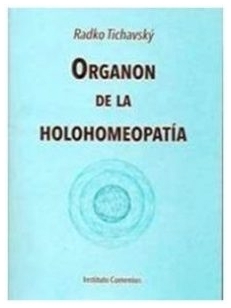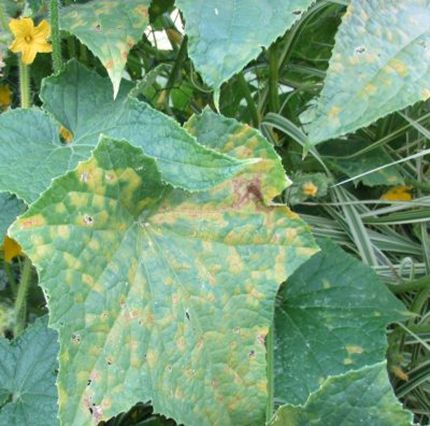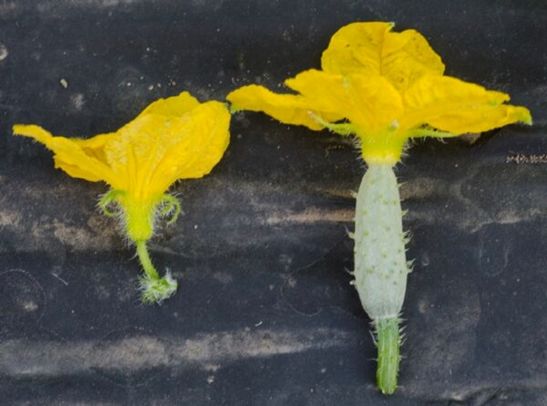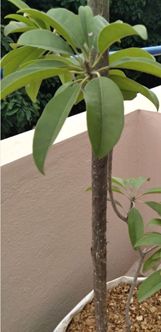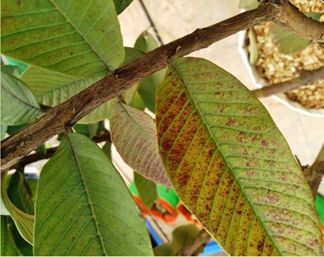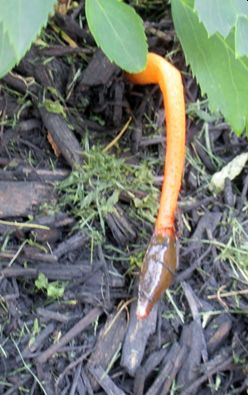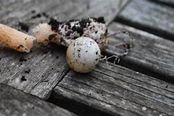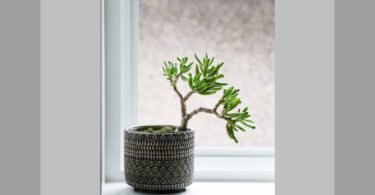Radko Tichavsky is a Czech born Mexican Agrohomeopath. He is a co-founder and director of Instituto Comenius in Mexico and author of Handbook of Agrohomeopathy, 2007 (Spanish) and Homeopathy for Plants, 2009 (Spanish), Organon de la Holohomeopatía and creator and teacher of Holohomeopathy.
He is now offering a one-semester virtual course in Holohomeopathy (in English). You can learn how to define and analyze holons and how to repertorize the specific homeopathic treatment beyond just disease or pest names. You can find out more here: www.icomenius.edu.mx
NEW BOOK: Organon de la Holohomeopatía
Six years in the making, it is the latest book by Radko Tichavsky, researcher on the application of homeopathy in agriculture. This Spanish language book covers homeopathic interventions in agriculture from the holistic view, allowing greater certainty in repertorizations. It addresses a novel concept of metabolic similarity, not only among plants, but also among different species of the animal and plant kingdom. It studies the formation and dynamics of attractors, areas of greater vitality within the holons and coexistence units of different living organisms Holohomeopathy is a fascinating contribution to the application of homeopathy to plants. It allows one to discover a universe of surprising relations in vital dynamism. It puts into the hands of the agricultural producer, a valuable tool for the successful handling of pests and diseases in crops of any size. For ordering or information: [email protected]
Dear Dr. Tichavsky,
Our blue Oak trees are stressed from drought and heat. We had a long, cool, but dry spring. Early July saw a week of 100+ degree weather and we’re still getting temperatures in the 90’s. The Oaks in our area have begun yellowing and dropping leaves. We have several weeks to go before it will rain. Is there any way I can support them in the mean time? We’re in Oak Glen California (U.S.) (Zip 92399).
Thank you
Noah
Radko Tichavsky:
Dear Noah,
The resistance of Quercus spp. depends mainly on the correct inoculation of mycorrhizal fungi such as Glomus intraradices Acaulospora spp. Gigaspora spp. These can extend the roots of the tree for tens of meters and also make bioavailable some nutrients such as phosphorus and modify the response of the tree in conditions of intense water stress.
You can look for an old and well vitalized Quercus, collect the first 5 centimeters of soil, a sample (a small bag of soil). Place this sample in a textile bag and immerse it in a 20 liter bucket of non-chlorinated water repeatedly as if you were preparing a tea. Then water the soil around the stressed trees with this soil tea species.
You can also look for commercial inoculums of fungi such as Acaulospora sp. and Glomus sp. or Gigaspora sp. and inoculate them on your trees. Additionally, you can make live bionosode from Opuntia ficus indica. Cut two or three cladodes of Opuntia ficus indica and cut them into pieces and place them in 20 liters of non-chlorinated water. Let them extract for 12 hours, then remove the cladode pieces and dilute the remaining liquid in a ratio of 1:100, and make 500 vigorous turns to the left and 500 vigorous turns to the right and apply on the soil around your trees.
Hi sir,
I am from Maharashtra India. I want to know how to deal with blight on cabbage and also worms on cabbage. In our area we get medium to heavy rainfall and nowadays temperature ranges from 23 to 28C.
Thank you
Pravin Shewale
Radko Tichavsky:
Hi Previn,
To solve the problems of Alternaria sp. the cause of blight on cabbage and worms on cabbage you can use essential oil of Eucalyptus sp. and essential oil of Azadirachta indica (neem tree). You will need only a small amount and dynamize it in non-chlorinated water at potency 3 JT or 3 CH and apply once every 10 days to completely solve the problems you point out.
Hello Mr. Tichavsky,
I live in a humid little valley in the Southern US (zipcode 31305 ) and I’m having the worst time with fungal diseases on all of my plants. I’ve lost all of my tomatoes to blight, my cucumbers to fungus, my figs now have it and my buttercup squash are struggling. How do I combat this organically? I don’t ever top water and in fact I haven’t watered at all in weeks. I’ve pruned to increase the (nonexistent) air flow. My plants are soaked with dew every morning when I go out to check on them.
Thank you
Mark
Radko Tichavsky:
Dear Mark,
The extreme climatic conditions present today expose plants to intense oxidative stress and in response the plants decrease lignin production in the leaves. Necrotic lesions are produced in the leaves which are the entry point of spores and conidia to the stomata of the plants.
It is important that your crops are not deficient in potassium because this element is responsible for the correct closing of the stomata of the leaves exposed to infection precisely during the generation of dew in the morning.
The next step is to prepare a hydrolate of Opuntia ficus indica cladodes and Aloe vera leaves. Chop the Opuntia sp. cladodes with a knife and open the Aloe vera leaves extracting the gel and leave them for 12 hours in non-chlorinated water.
Then prepare a dynamization of this hydrolate at 3 JT potency also in non-chlorinated water and apply it on the leaves and on the soil of your crops every 5 days until the fungal problems disappear.
Both plants contain a great variety of Bacillus (e.g. B.subtilis, B.megaterium, B.amyloliquefasciens B.sphaericus B.cereus, ) which are antagonists of the ascomycetes and oomycetes fungi that cause problems on your plants. This will quickly remedy your problem. In addition, both plants contain sunscreens that will help reduce stress on your plants and prevent similar problems even in adverse weather conditions.
Hello Plant Doctor,
I’m having a water snail infestation in my lettuce crop. I tried Helix Tosta 6ch, but it didn’t help. They’re multiplying like anything! Is there a non- chemical way to deal with this problem? My crop is in Camden New Jersey (U.S.) 08104. The summers are warm and humid, the winters are very cold, and it is wet and partly cloudy year round. Over the course of the year, the temperature typically varies from 26°F to 87°F and is rarely below 13°F or above 94°F.
Thank you
Jason
Radko Tichavsky:
Hello Jason,
Helix tosta is a remedy prepared from the burnt shell of snails and serves only as a very weak repellent, frequently recommended in some books of agrohomeopathy, but not very useful and mostly ineffective in professional production.
You can look for a plant of the genus Euphorbia sp., and one of its characteristics is that they produce a latex that is highly toxic to snails. Prepare the latex in potency 3 JT in water and add as coadjuvant some Aloe vera gel liquefied in water. Apply by spraying before sunset on the plants and on the soil.
Dear Dr. Tichavsky,
Can you suggest a remedy for black knot on wild plum trees? I am afraid they will die. I live in Niagara County, New York (U.S.) (14012). Summer high in July is around 81 degrees F. Winter low is in January at 17 degrees F. Rain averages 36 inches a year. Snow averages 72 inches a year.
Thank you
Cindy
Radko Tichavsky:
Dear Cindy,
The black knot on wild plum trees is caused by the fungus Apiosporina morbosa also known as Dibotryon morbosum. It is a fungal disease (ascomycetes) that forms a kind of black tumor on Prunus sp. and other stone fruit trees. The bacteria Pantoea agglomerans, Bacillus subtilis, (both present in Aloe vera) and Pseudomonas fluorescens (present in the shiitake mushroom Lentinus edodes) are the main antagonists.
Mix in a blender some fresh Aloe vera gel and two shiitake mushrooms together with non-chlorinated water. Then make a dynamization at 3 JT potency, and add about 20 ml of Helianthus annus oil and spray this homeopathic preparation on the soil around the trees and on the affected branches or trunks once a month. If you decide to remove the tumors or branches, you must make a rigorous disinfection of the cutting tools between trees by applying alcohol at 70% and cleaning the tools very well.
Dear Mr. Tichavsky,
About half the leaves of my cucumber plants have yellow spots (see below) and it seems to be getting worse. There are lots of flowers, but very few cucumbers. Is this likely a mineral problem or something fungal, and what might I do about it?
We live in Newark Delaware (U.S 19702) We get 45 inches of rain a year. On average, there are 201 sunny days. The July high is around 87 F. January low is 24F.
Thank you
Helen
Radko Tichavsky:
Dear Helen,
Tthe picture shows plants probably infected with cucumber mosaic virus.
The disease is transmitted by insect vectors in this case Bemicia tabaci, a kind of small whitefly that sucks the sap from the plants and is usually found on the underside of the leaves.
It is important to control whiteflies with applications of Azadirachta indica and Artemisia annua at 4 JT potency. Foliar applications should be made once a week.
It is known that the presence of certain rhizobacteria in the plant sap, specifically Bacillus subtilis, Bacillus pumilus and Bacillus amyloliquefasciens, increase the resistance of cucumber plants to mace virus, especially in case of double inoculation with different species of Bacillus and spores of Glomus mosseae, a mycorrhizal fungus (you can find it for example in the root system of Trifolium repens, commonly called white clover).
The Bacillus mentioned above can be found in Aloe vera gel. First you extract some Aloe vera gel and blend it in a liter of non-chlorinated water, then you collect some white clover roots, wash them very well in tap water, then place them for two minutes in 70% ethyl alcohol and finally wash them again in tap water.
Then place the roots in the blender together with the aloe vera gel, blend for one minute, filter the content and dynamize the liquid phase in non-chlorinated water at 3 JT potency (dilutions of 1:100 followed by 500 vigorous succussions or 500 turns to the right and 500 turns to the left when it is a larger quantity of liquid).
The remedy is preferably applied on freshly sown seeds.
In case of plants with already developed mosaic virus it can also help but for a good result it should be supplemented with Salix babylonica prepared from the mother tincture prepared in ethyl alcohol at 30% and left to extract for a week and dynamized up to potency 4 JT.
The first remedy is applied either on the newly sown seeds or on the aerial part of the plants and on the soil only once, and the application of Salix babylonica 4 JT is applied once a week foliarly.
Low fruit production may be due to an incorrect ratio of male and female flowers or to the water stress conditions (too much or too little water), or stress caused by the presence of the whitefly (as seems to be the case).
But it is also very important to know that the first flowers to appear on the plant are the male ones, only about three per plant should be left. Cutting some male flowers produces hormonal changes in the plant and it produces more female flowers and these are finally the ones that produce the fruit.
On the left a male flower and on the right a female flower
Dear Plant Doctor,
I planted a grafted Zapota (Chikoo) plant in a pot a year ago. The plant is not well developed. It developed a few leaves and stopped growing. Even after applying good compost, I don’t see any growth.
Also, my Guava potted plant is healthy, but some leaves are changing color to red and will get dried out and fall. Is it due to any disease? Please find attached plant images. I am in Bangalore, India.
Zapota Guava
Thanks,
Murali
Dear Murali,
It should be noted that grafted Zapota (Chikoo) is a tree that forms a very extensive root system and is slow growing. My suggestion is in this case to look for a much bigger pot or even better to transplant the tree in its definitive place.
You can apply Calcarea carbonica 6 CH and germinate a handful of lentil, liquefy the sprout in a liter of non-chlorinated water, make 500 vigorous succussions and apply around the trunk. The lentil sprout produces a large amount of auxins, growth hormones that cause the elongation of the roots and increased growth of your plant.
As for the red spots on the guava plant, it is most likely Phyllosticta capitalensis and its telermorph Guignardia, an important plant pathogenic genus known to cause leaf spots and various fruit diseases worldwide on a large range of hosts.
It is of recent appearance in rainy periods and it spreads rapidly, affecting up to 80% of the leaves of the plant causing weakness and leaf drop but also attacks fruits.
The fungus produces phyllostin and phyllostoxin, two potent mycotoxins that make it difficult to control. As prevention you can use live bionosode brewer’s yeast (Sacharomyces cerevisae) prepared at 4 JT potency. In case of heavily infected plants like the one in the picture it is better to apply Thymus officinalis essential oil at 12 JT potency in foliar applications once a week until the presence of red spots is reduced.
Dear Radko,
These strange plants grow overnight and multiply quickly. They feel like human flesh! Any idea what they could be and how to stop them? The green leaves are from a nearby plant. The strange plant has no leaves. They just started growing in between our other plants. We’re located in Pennsylvania (Eastern U.S.) (17540) and the climate and rainfall are moderate.
Thank you
Russell
Radko Tichavsky:
Dear Russel,
These strange-looking “plants” are actually fungi, Phallus rugulosus or Phallus rubicundus (Basidiomycota) – the two look alike, the first is more slender. Phallus sp. decompose wood and plant material, and are very important recyclers: they secrete enzymes and acids that degrade larger and more recalcitrant compounds into simpler ones. Ecosystems depend on their ability to recycle organic matter and return nutrients and minerals back into the cycle of life.
Phallus sp. are often introduced into gardens with organic material (soil and especially mulches) which contain hyphae of stinkhorn fungi (their common name). Another possibility is incorrectly handled compost materials: frequent turning and excessive aeration interrupts the compostation process, and after you apply it to your garden, chances are that decomposition will continue there.
When ample unrecycled organic matter is available, Phallus hyphae spread within it. Removing the resulting mycelium and completely eliminating these fungi is a daunting task, virtually impossible even with the use of fungicides, which will bring more harm than benefit. Using antagonistic bacteria might also be problematicas Phallus sp. produce antimicrobial compounds.
Since Phallus sp. breed on mulch (visible on your picture), you may try to replace it with pine needles or cypress branches, which naturally contain antifungal substances in them. Pine or cypress materials however, are metabolically similar to only some of your plants, not all; and they also eventually would have to be recycled, but by the different set of fungi.
Most Phallus sp. in addition to their strange looks have putrid smell. Stinkhorns are among those Agaricomycetes that have lost their active spore discharge mechanism, therefore can not get spores spread by the wind. Instead, their spores collect in the gelatinous substance (gleba) at the mushroom cap, and fungi exude specific volatile organic compounds VOCs attracting mycophagous arthropods, mostly dipteran flies and some beetles.
They feed on gleba, pass the spores through their digestive tracts, and disperse them with feces. Mature stinkhorns also use optical mimicry (coloration of meat/carrion) to attract carrion and dung flies and scarab beetles – just like foul-smelling plants like Amorphophallus or Stapelia do to attract flies which normally visit dead animals.
There is some consolation in the fact that at least two of the VOCs of Phallus sp. (Dimethyl disulphide and Dimethyl trusulphide) are the same constituents of the famous truffles Tuber melanosporum odour bouquet. Despite their alien looks, Phallus sp. are not toxic, otherwise they would not be able to disseminate their spores, so there is no threat to your plants or pets.
In some places the immature eggs are considered edible, and recipes exist. P. rubicundus is reported to be used in Central India against typhoid and to ease labour pains. In China – for treatment of various skin ailments. Commercial breeders of Drosophila flies (extensively used for laboratory experiments everywhere in the world) use Phallus sp. because they give off not only attractants (hexadecane, pentadecane, nonadecane), but also several appetite signalling VOCs, and two pheromones specific for Drosophila females – to induce breeding.
Out of seven Drosophila sp. attracted to Phallus sp., at least one lays eggs in the immature Phallus “eggs”, i.e., prior to the development of stinky odors. Hatching of laid drosophilid eggs can be delayed; attraction of different parasitoid eucoilid and braconid wasps, like polyphagous Leptopilina clavipes, or Leptopilina heterotoma are also observed.
L.heterotoma, however, is sometimes attracted to uninfested stinkhorns, but avoids fungi already populated by its fly host alone, or by the host already infested with competitor parasitoid. This is just one example of the complex role these fungi might play in ecosystems.
Another curious connection is association between stinkhorn fungi and badger, Meles meles, setts (underground homes) described in England, Ireland and Italy. Badgers live in territorial groups, with one main – most used – and few subsidiary setts; they mark their territories with latrine pits.
Multiple stinkhorns are frequently located within 50m of sett entrances, but never around latrine pits. In addition to fungus-fly mutualism, beneficial association exists between badgers and the flies: the blowflies would rapidly and efficiently remove badger cadavers from the underground setts, which otherwise are potentially dangerous as disease reservoirs for the rest of the social group.
Female Callipora flies, the most important in the disposal of carcasses, unlike most flies, are not repelled by the cool darkness of underground cellars: “their uncanny instinct enables them to locate meat in spite of extraordinary obstacles”. Sitnkhorns in this case serve to attract blowflies to areas around badger sett entrances around the time that badger cubs die below ground – amazing example of mutualism with badger.
If these facinating facts did not dissuade you from fighting your P. rugulosus, you have to manually pick them out to prevent the spread of their spores; and also pick out their “eggs” buried in the substrate – the unripe fruiting bodies -, and disturb the cords with which the eggs are connected to the mycelium.
Otherwise, just wait: after dry and sunny weather arrives, fungi (their fruiting bodies that is) will disappear, leaving behind nutritious substrate for your plants.
Greetings Dr. Tichavsky,
I have ants burrowing around and eating the leaves of my beet plants. A few are yellowing and not looking as well. Not sure if that is from ants. We aren’t quite sure if it’s a water pH issue (we have high pH from well water). Any suggestions? Thanks!
Marie
Radko Tichavsky:
Dear Marie,
The presence of leaf cutter ants (Acromyrmex sp.) is due to poor soil structure, it has nothing to do with high pH. Ants have the ability to greatly improve soil fertility and structure. The anthill applied in the form of tecomposta is one of the best fertilizers in the world!
These ants collect the leaves, clean them thoroughly with formic acid and introduce them in a kind of subway caves where they produce fungi on them that are finally used for their nutrition.
The way to displace them is simple: apply fungi that compete with the fungi that the ants produce in the subway caves.
Let an orange spoil until a greenish-white fungus appears on the surface of its epidermis. Remove it from the surface with the help of a knife, dissolve it in 100 ml of orange juice and make 500 vigorous succussions, then dissolve this liquid in 10 liters of water and make 500 vigorous turns with a wooden stick to the right and 500 turns to the left.
Apply the liquid two meters away from the main entrance of the anthill (not directly in the hole). In this way the ants will infect their mushroom crops in the underground caves and change their nest to another terrain.
Another way to eliminate ants is by applying Nerium oleander dried leaf water juice dynamized to the 3 JT power poured directly into the main entrance of the colony. This remedy is highly toxic to Acromyrmex sp. ants but it will not eliminate the entire colony, it will only temporarily decrease it.


